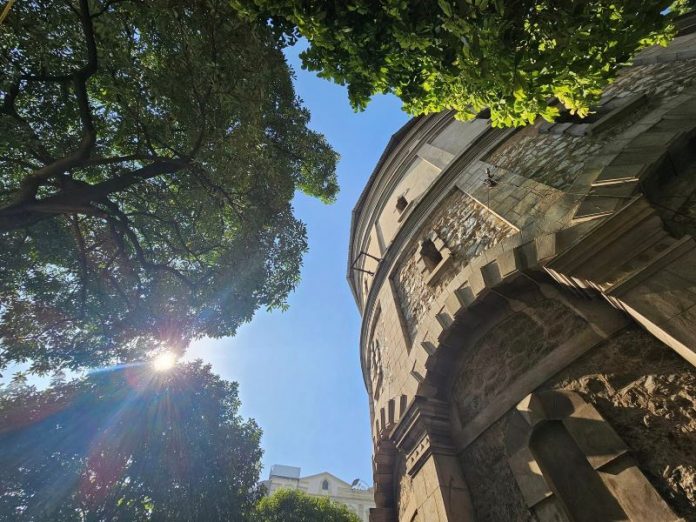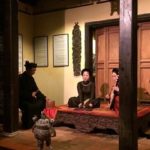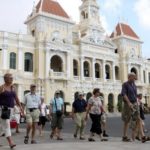Hang Dau Water Tower is a captivating structure that has stood the test of time since its construction in the late 19th century by French colonists. Its allure has only grown, attracting visitors from far and wide, especially after the captivating installation art exhibition during the Hanoi Creative Design Festival last year.
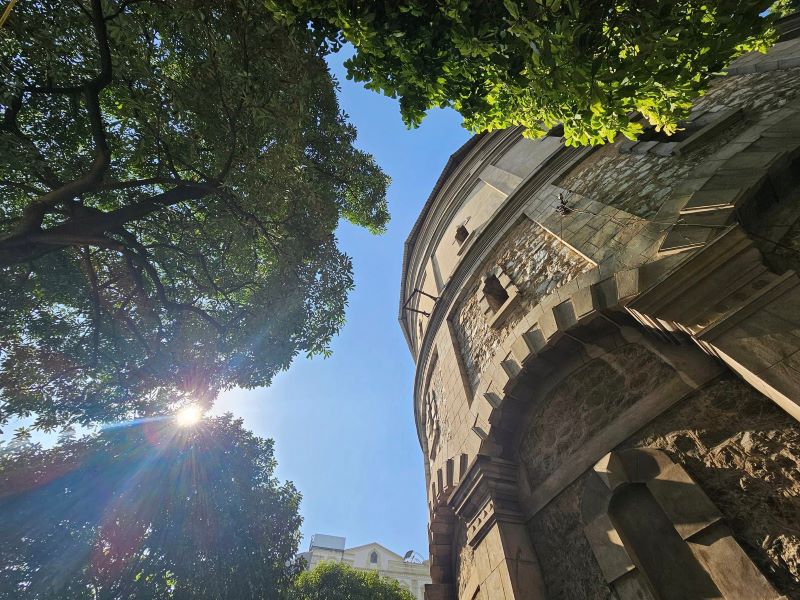 |
| Dawn breaks at the Hang Dau Water Tower, illuminating its majestic structure. Photo: Nam N |
A Historical Landmark and Hanoi’s First Safe Water Supply Station
In the 19th century, French colonialist troops seized Hanoi in 1882 and established their presence in the Hanoi Citadel and Tho Xuong District (then the center of Hanoi Province). They faced a formidable challenge adapting to the city’s tropical climate, which was a stark contrast to the temperate climates they were accustomed to. This led to the digging of wells and bathing in ponds and lakes, similar to the natives, during scorching summers.
However, this also resulted in many soldiers contracting scabies. Adding to their woes, on November 1, 1886, French Resident General Paul Bert succumbed to dysentery. These health crises compelled the French to address the urgent need for a safe water supply.
In 1894, the French colonial government took decisive action by establishing the Department of Water Supply and constructing the first water purification factory. This factory was strategically built on land belonging to Thach Khoi and Yen Dinh villages, now part of Tay Ho District. Its initial purpose was to purify water sourced from four wells.
 |
| The Hang Dau Water Tower stands tall at the intersection of several streets, including Hang Than and Quan Thanh. Photo: The Hanoitimes |
At that time, coal fired steam engines were utilized to power the water purification process, as oil was not readily available in the city. The purified water was then pumped into a storage tank using a propeller, and a network of pipes distributed it to the areas in need. As the demand for water increased, particularly in the two story command posts and officers’ residences within the citadel, a higher water tower became a necessity.
A site on Rue des Graines, now known as Hang Dau Street in Quan Thanh Ward, Ba Dinh District, was selected for the new tower. This area had recently been leveled, making it an ideal location near the citadel. The purified water from the factory would flow through pipes to the tower, ensuring a stable supply.
The Construction of the Tower and its Impact
 |
| The Hang Dau Water Tower has stood the test of time, retaining its original structure. Photo: Hong Minh |
In 1894, the stones from the demolished Hanoi citadel walls were put to good use in the construction of the water tower’s body. The tower boasts a cylindrical shape with a diameter of 19 meters and a height of 25 meters. To ensure an uninterrupted water supply, elevated steel tanks with a capacity of 1,250 cubic meters were installed within the tower.
Pipes were laid from these tanks to the citadel and the streets, providing safe water to government offices located along the route from Hang Giay Street to the Hoan Kiem Lake area. The Department of Water Supply meticulously managed the system by calculating daily water usage and controlling valves to maintain smooth operations.
The Yen Phu Water Plant officially commenced operations in 1896, and its capacity continued to expand. By 1899, the factory had dug another large diameter well, increasing its daily capacity to 2,500 cubic meters, and by 1900, it had reached an impressive 4,000 cubic meters.
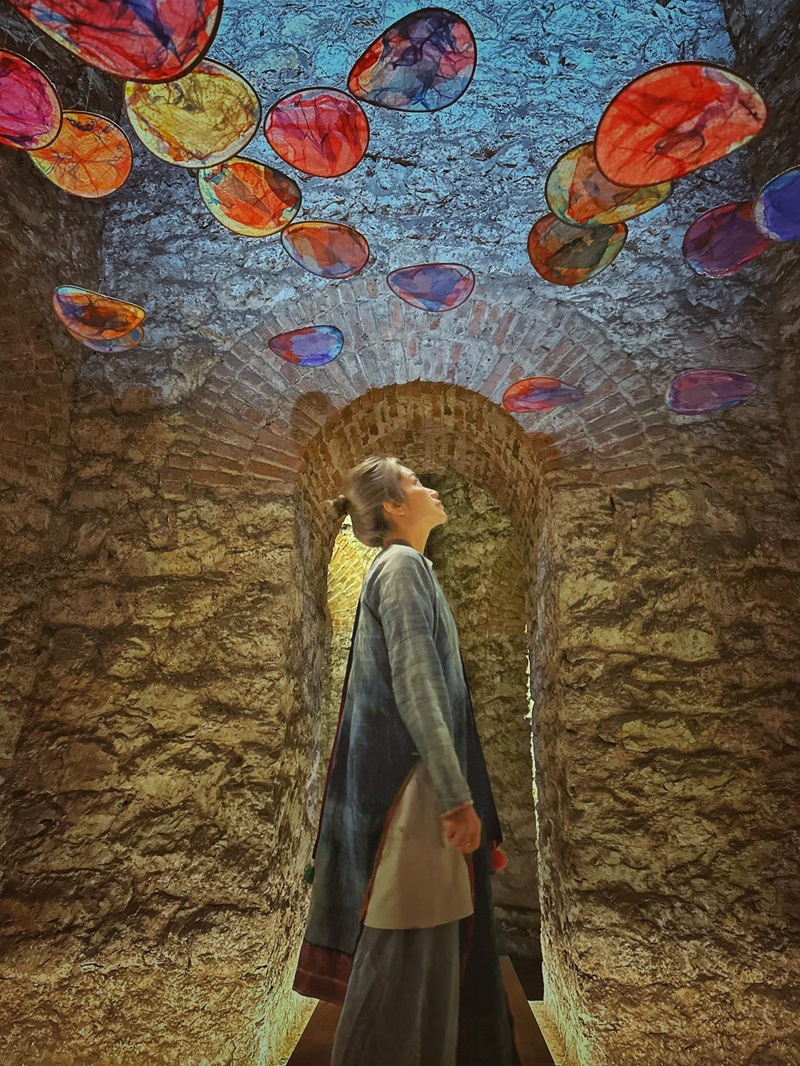 |
| The “Light and Water” installation inside the Hang Dau Water Tower, a creative collaboration between architect Cao The Anh and artist Nguyen Duc Phuong. Photo: Huong Giang |
In a report by Mayor Baille of Hanoi, included as an appendix in the report “Situation of Indochina between 1897 and 1901” by Governor General of French Indochina Paul Doumer, the successful water supply operation was commended: “The supply of clean water has been in full operation since February 24, 1900, to everyone’s satisfaction. The city also negotiated with contractors to ensure a daily production of at least 5,000 cubic meters in the coming years.”
Hanoi continued to expand its water infrastructure by installing additional pipes and establishing metered water company branches and public water stands. By 1901, the total length of water mains had reached 26 kilometers, and there were 85 metered branches and 85 public water stands serving households that could not afford a tap.
 |
| The “Light and Water” installation captivates visitors with its unique blend of architecture and art. |
Following the establishment of the Yen Phu Water Plant, four more water purification plants were constructed in Hanoi: Don Thuy (1925), Bach Mai (1931), Ngoc Ha (1938), and Ngo Si Lien (1941). Each of these plants contributed to the city’s growing water supply capacity.
By the time Hanoi was liberated on October 10, 1954, the Hanoi Water Supply Department managed five safe water purification plants, producing a total capacity of 26,000 cubic meters per day. The pipeline network had also expanded to nearly 100 kilometers in length, providing piped water to 58% of Hanoi’s population, including 24,000 inner city residents.
The Hang Dau Water Tower concluded its operations in 1960, and in the early 21st century, it faced the threat of demolition by an investor. Fortunately, this proposal was rejected, preserving the tower’s historical significance.
A Cherished Tourist Attraction
 |
| The Hang Dau Water Tower stands proudly, surrounded by the vibrant colors of the loc vung or Barringtonia acutangula trees. Photo: The Hanoitimes |
The Hang Dau Water Tower exudes classical beauty and an impressive sense of majesty. It has become a beloved backdrop for memorable photographs, attracting both locals and tourists alike. Regardless of the season, friends gather here to capture special moments against the tower’s timeless backdrop.
Recognizing the tower’s potential, the Hanoi government has introduced a policy to develop cultural industries, positioning the Hang Dau Water Tower as an “industrial heritage site.” Through sustainable exploitation, this ancient waterworks is poised to become a captivating cultural attraction, enriching the city’s cultural landscape.
 |
| The Hang Dau Water Tower has transformed into a beloved tourist attraction, drawing visitors eager to immerse themselves in its historical and architectural allure. Photo: Dung Dang |
Ancient house in Ma May
NDO – Ma May, a rare quarter that still retains several old houses, has created one of the characteristics of Hanoi. Hanoi’s streets are becoming increasingly crowded and traditional features can sometimes be hidden behind modern life. But if one takes the time to relax and look around, the ancient features begin to reveal themselves.

